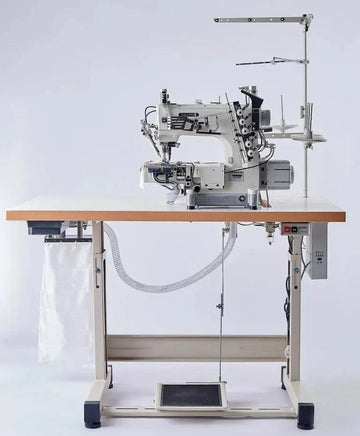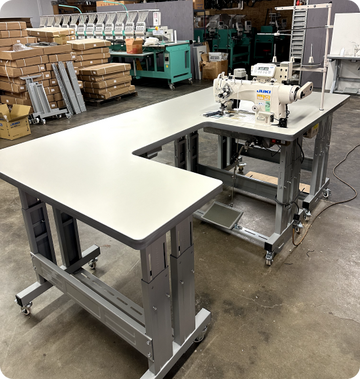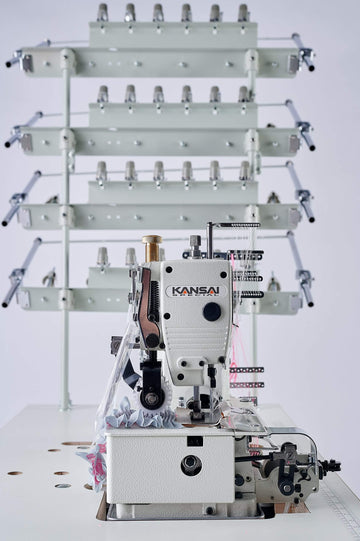Garment manufacture is a complex process that requires stringent control at every stage to ensure that the factory maintains quality standards, meets legal requirements, and operates efficiently. In this regard, the value of audits - internal, social, technical, and compliance - can be tremendous not only for the company itself but also for its workers, investors, and customers. Let’s learn more about garment factory audits to help you create a high-quality manufacturing environment.
What is an Internal Audit in a Garment Factory?
Internal audit is a process of evaluating a garment manufacture facility by the factory itself. It’s conducted by a designated internal auditor, who assesses the operational efficiency and regulatory compliance of the factory and reports problems to the top management so that they can take corrective actions and fix the issues effectively. Many companies certified under ISO 9001, ISO 14001, and ISO 45001 also conduct ISO internal audits in apparel manufacturing to ensure their compliance with international standards.
The scope and frequency of internal audits depend on the size, structure (industrial or commercial), and operational policies of a garment production company. Most factories perform them 2-4 times a year and may schedule additional checks before upcoming external audits.
Internal audits often focus on the following areas:
-
Quality control
-
Production processes (workflow efficiency, sewing machine maintenance, etc.)
-
Human resources
-
Safety measures
-
Environment management systems
-
Documentation and legal compliance
Benefits of Internal Audits in Apparel Manufacturing
An internal audit of a garment factory is essential for any brand willing to stay competitive in the industry. Its key benefits include:
-
Consistent assurance of product quality
-
Compliance with legal and regulatory requirements
-
Readiness for external audits
-
Mitigation of potential production risks
-
Enhanced worker safety and job satisfaction
-
Prevention of financial losses through timely problem detection
How to Conduct an Internal Audit in a Garment Factory
An internal audit should be performed step-by-step to ensure all the operations are evaluated thoughtfully. Here’s how to audit a garment factory:
-
Planning and scope definition: set the objectives and scope of the audit. Do you want to prepare for an external check or improve the company’s performance? Determine which departments, processes, and systems will be evaluated and create a schedule for each check.
-
Preparation of a garment factory audit checklist: a well-thought-out audit checklist helps collect all the needed data more quickly, easily, and efficiently, while keeping the process organized. We will discuss the details shortly, so keep reading.
-
On-site inspection and interviews: evaluate the garment production processes and determine whether they comply with the established company requirements and industry standards. In addition, interview employees to find out how they feel about their job. Make sure they know all the operational requirements and safety rules.
-
Documentation and reporting: collect the required paperwork for verification and prepare a detailed garment factory audit report, outlining all the compliances and non-compliances that have been revealed during the audit.
-
Corrective actions and follow-up: once all the problematic areas are determined, decide how you can fix the issues. Assign responsibilities among the employees and set deadlines. Finally, make sure the problems have been resolved effectively.
Internal Audit Checklist for Garment Manufacturing Company
An internal audit checklist for a garment manufacturing company should include a few essential elements as highlighted below. However, you can expand the list, depending on your objectives:
HR and payroll:
-
Timely salary payment
-
Attendance register
-
Working hour record
-
Any harassment or discrimination issues
-
Recruitment policy
Health and safety:
-
Use of personal protective equipment
-
Availability of the first aid kit
-
Proper chemical handling and storage
-
Overall cleanliness of the workspace
-
Availability and condition of fire extinguishers
Production processes:
-
Machine maintenance schedules
-
Worker training records
-
Fabrics handling processes
-
Sewing efficiency
-
Production planning and testing
-
Waste management procedures
Quality control:
-
Fabrics inspection procedures
-
Step-by-step quality checks on each production stage
-
Defect tracking system
-
Corrective practices to address manufacturing issues
-
Adherence to buyer quality standards
Documentation and records:
-
Audit reports
-
Employee training documentation
-
Health and safety records
-
Maintenance logs
-
Availability of up-to-date production manuals
-
ISO or client-required certificates
Other Types of Garment Factory Audits
Internal audit is not the only type of check performed for garment manufacturing factories. Other audits include:
-
Social audit: a social audit garment factory evaluates whether the factory’s working conditions comply with labor standards (employee treatment, working hours, health and safety conditions, etc.).
-
Technical audit: determines if a factory follows specific production and quality requirements. The garment factory technical audit checklist typically includes the assessments of sewing equipment, workflow efficiency, production processes, working environment, and garment quality.
-
Compliance audit: checks whether a supplier follows legal regulations and client-specific requirements. The garment factory internal compliance audit checklist covers many areas, from licenses and permits to environmental management, training records, and company policies.
Garment Factory Audit Form Format
A proper garment factory audit form format makes the evaluation process more organized, ensuring that all areas are reviewed carefully. It includes the following sections:
-
Basic factory information
-
Audit objectives and scope
-
Garment factory audit checklist with scoring and compliance status
-
Paperwork that should be collected during the process
-
Sign-offs and follow-up actions
Sample Garment Factory Audit Report Structure
A garment factory audit report is a document summarizing company checks so that the brand owners, investors, and clients can get a clear idea of the factory’s performance. A well-written report should contain the following information:
-
Audit date and type
-
Summary of findings
-
Detailed observations section by section (HR and payroll, production processes, etc.)
-
List of non-compliance issues
-
Notes or photos collected during the audit
-
Action plan and recommendations
Best Practices for Successful Audits
Consider some practical tips on how to ensure your garment factory audits are successful:
-
Educate your team about the workplace policies and operational processes
-
Conduct internal audits before each external check
-
Encourage consistent improvements in the manufacturing procedures
-
Keep garment production under stringent control
Consider Your Equipment Setup
Some companies overlook their equipment setups while conducting audits. However, investing in reliable sewing machines and custom workstations, like Prizzi tables, can improve the overall business performance and foster profitability. Each Prizzi table meets international standards and has a life-long warranty, which makes it a top choice for high-volume garment production. Pick up your order in South El Monte, Los Angeles, California, or we can ship it to any US state.
Conclusion
Properly executed garment factory audits help generate valuable insights into the production quality, legal compliance, and operational efficiency of a company to prove its reliability and trustworthiness. Conduct audits on a regular basis and fix all issues in time if you want to grow your business and earn the trust of your clients and investors.
Co-Owner at Prizzi Sewing Machine Co.
Expert in sewing factory workflow optimization











